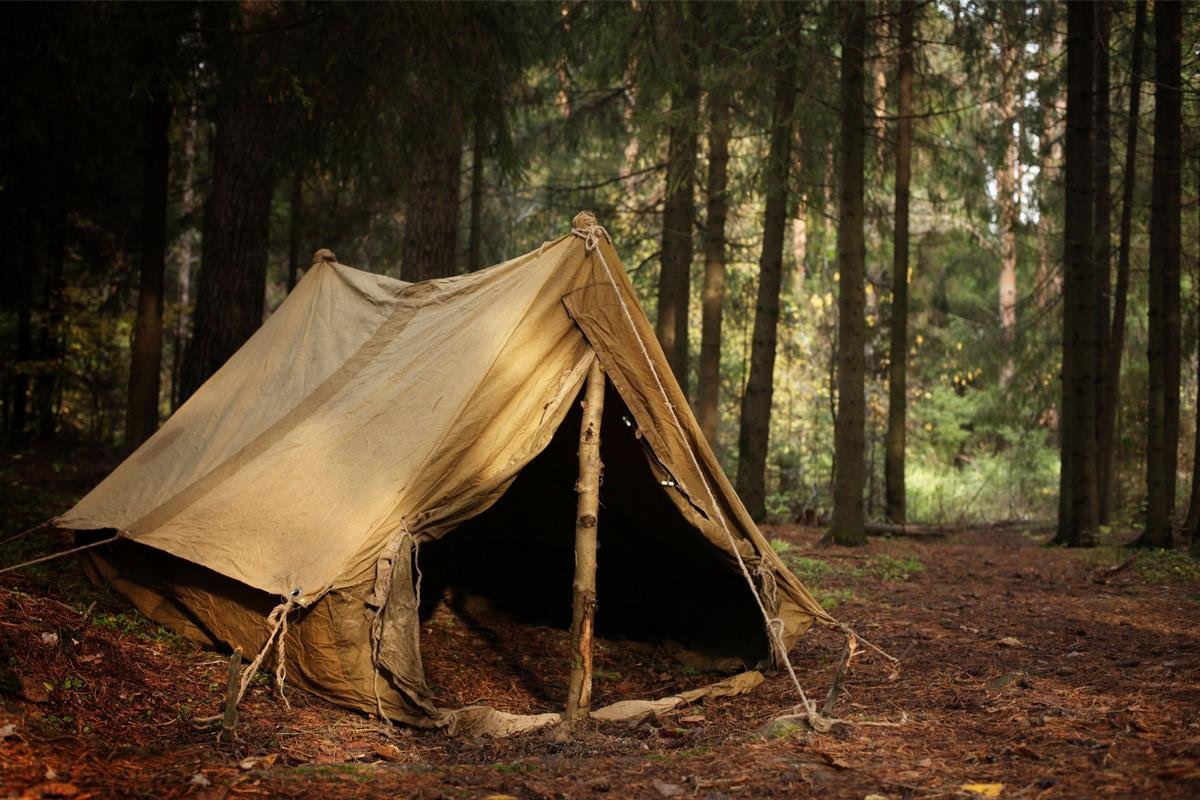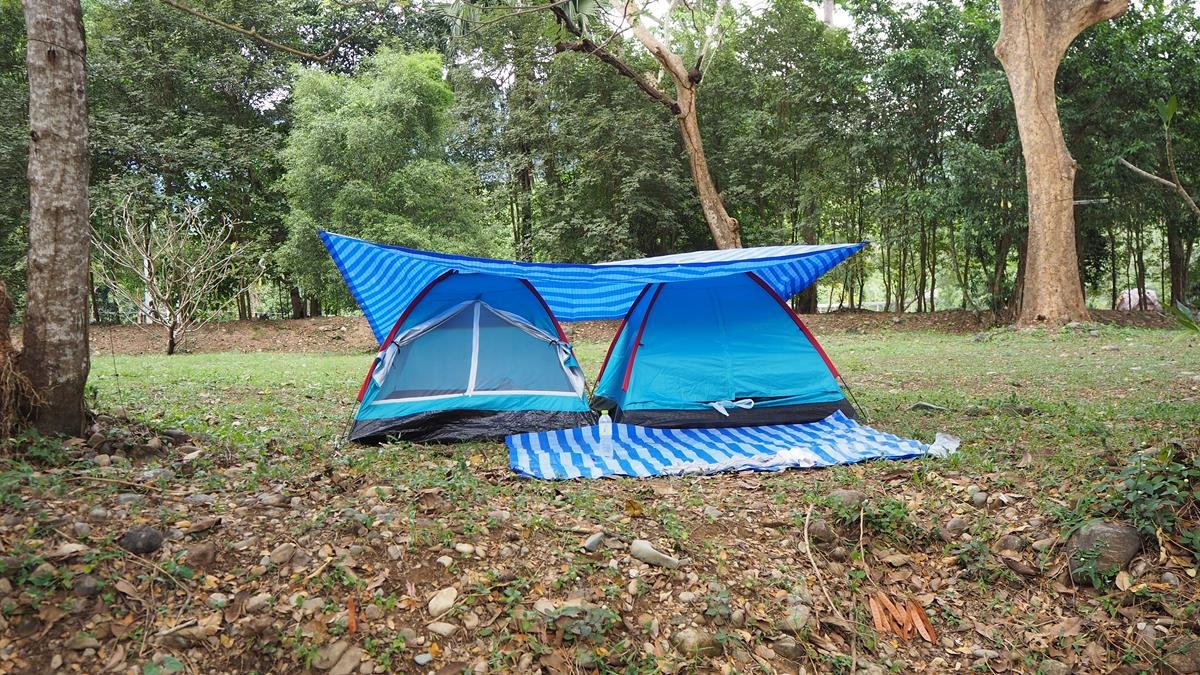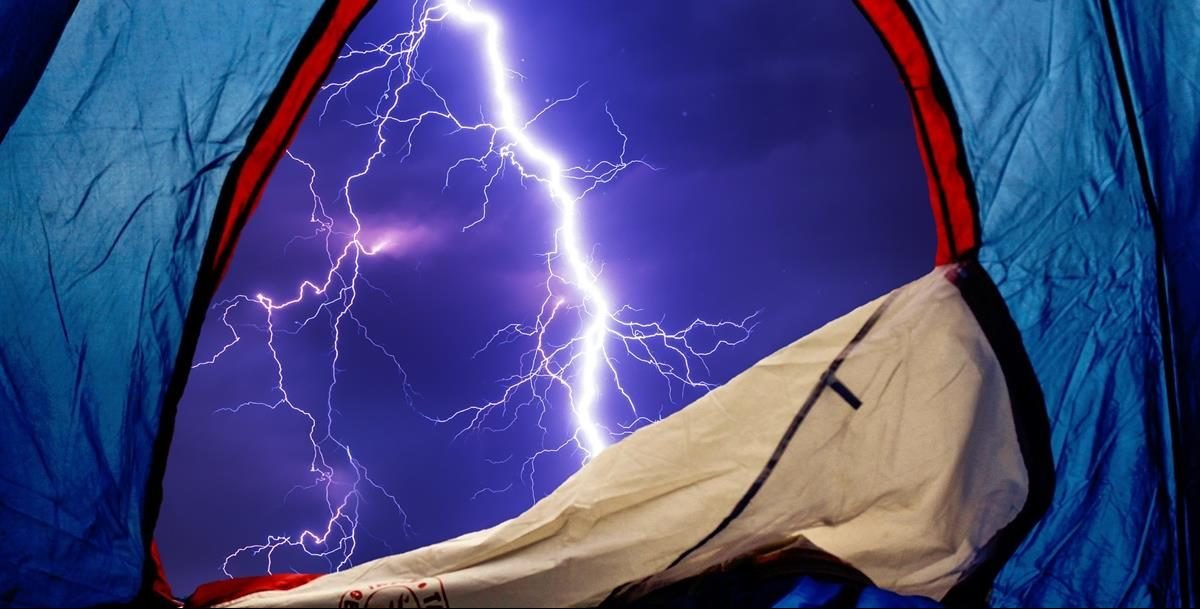Every year, millions of people around the world happily spend the waning days of Winter planning their first camping trip of the Spring. It is different for us all. For some it will be a trip to a pristine, National Park campground with all the modern comforts of home like electric hookup, water, showers and toilets. For others, it will be a trip to somewhere more dispersed for some wild camping off the beaten
For some though, the happiness and excitement of planning and gearing up for that first camping trip of the new year is quickly replaced by the confusion and disappointment of finding their camping tent has somehow become a smelly, moldy mess since the last time they used it. If the telltale blackish and gray stains of mildew and mold aren’t enough to call attention to the problem, the unmistakable smell most definitely will be.
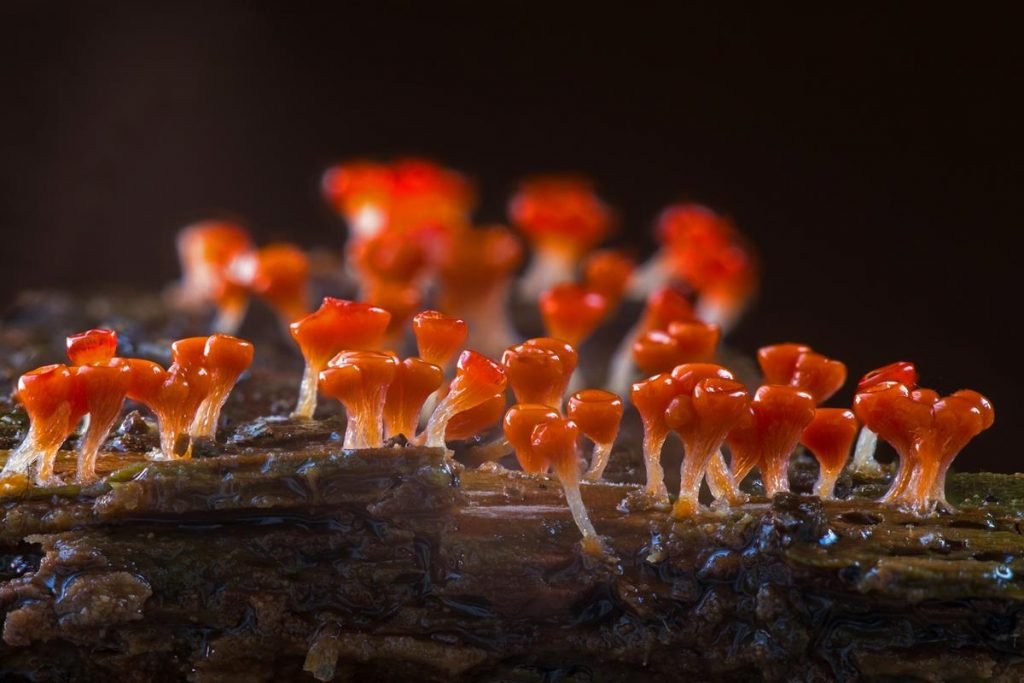
Some people might simply toss the tent in the trash bin, go out and replace it with a new one. For others, the added cost and hassle of purchasing a brand new tent costs too much to spend or is just not a practical solution.
Sure,if you can afford it and don’t mind, you can replace that stinky tent without much trouble at all. But, is that truly necessary? After all, isn’t part of the appeal of camping that it offers us a chance to get back to the way things were before most products became so disposable? An opportunity to find common sense solutions to problems?
So, is there a way to avoid the added expense and hassle of purchasing new equipment?
The answer to these questions is “yes”. You can, and should, remove and clean the mold from your tent. You can make your tent almost as good as new without spending that much money or time. All it takes is a few common household items and a fairly inexpensive bottle of something you just might have on hand, already.
Before we get into how to remove the stains and odor of mildew from your tent, let’s take a quick look at the most common causes of mildew in tents, the problems that mildew and mold in a tent can cause, and how to prevent future problems with mold and mildew once your tent is clean.
Why is My Tent Moldy?
First things first; why is my tent moldy? What causes mold and mildew in tents? Simply put, moisture is the cause of almost all mildew and mold in your tent.
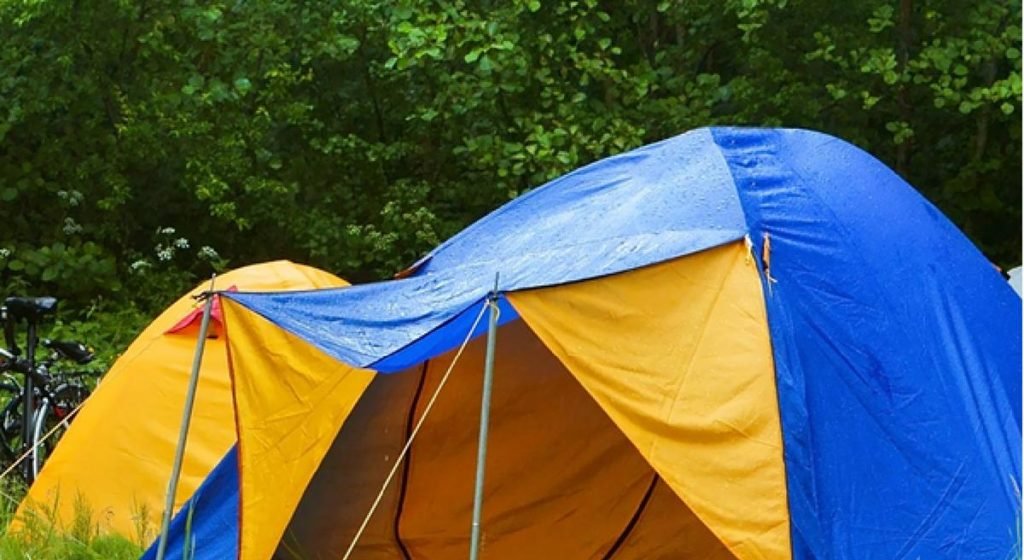
No matter how much money you might have spent on your tent, if it’s not cleaned, dried, and stored in a dry and somewhat cool area, chances are you’re going to find it by smell before sight in a few months. Heat plus dampness equals mildew. Left behind food particles and the like are another cause of mold. So, always make sure you clean, dry, and store your tent properly to avoid mildew problems.
Is Mold in a Tent Dangerous?
A couple of commonly asked questions concerning mildew in tents are, is it safe to use a moldy tent or is mold in a tent dangerous?
As to whether or not it’s dangerous to most campers,the answer is probably not, but it could be. In most situations, mildew and mold are more a nuisance than anything. While there are some forms of mold that are hazardous to the health of the average person, most are harmless.
However, if a camper suffers from allergies or a condition such as asthma, mold can cause issues like difficulty breathing and itchy skin. The smell alone is enough to prevent most people from using a moldy tent even for an evening.
Is It Safe to Sleep in a Moldy Tent?
Parents especially, want to know is it safe to sleep in a moldy tent? Again, in most cases, mold is not particularly dangerous.
If you have to use a moldy tent for a night, making sure you remove as much of the mold and mildew as possible first is obviously the best plan.
Is it dangerous? Not in most cases but in some, it absolutely can be. For younger campers it’s even more important to make certain you remove any and all mildew and mold from your camping tent prior to allowing kids to use it, even for one night. Unlike adults, allergies and other issues that mildew and mold can aggravate in younger kids aren’t always a matter of record. An unknown allergy or un-diagnosed case of asthma combined with uncleaned mildew can be a dangerous combination.
Why Should You Clean Moldy Tent?
Why should you clean a moldy tent? As we’ve already discussed, the smell of a moldy tent is usually enough to prevent most people from even considering spending a night in one without cleaning it, first.
If you don’t mind the smell for a few hours, consider that in many cases that smell is going to find its way into whatever is left inside for any substantial length of time. That means clothes, bedding, and even your skin in some instances.
Aside from the scent, there’s also the potential, however slight, of health issues like allergic reactions.
In general, it’s just a good idea to take the time to get the mold and mildew out of the tent before using it. While it most likely won’t cause you any long term problems, it’s just a good idea. That’s why you should clean a moldy tent.
How Do I Clean My Tent of Mold and Mildew
Cleaning mildew and mold from tents made of canvas and other commonly used fabrics isn’t that difficult. It can be done for little or no additional costs using kitchen products or cleaners that you already own. All it takes is a bit of effort and time.
There are several ready made liquid products designed especially for the removal of mold from fabrics and tents. As you will see, there are other, highly effective, tent cleaning options available.
How to Clean A Moldy Tent?
Cleaning mold from your tent (and any other fabric) has 3 stages:
- Remove as much mold as possible
- Kill the remaining mold to prevent any regrowth
- Clean any remaining discoloration of the fabric
To get started, we recommend you do this outside on a warm, dry day.
Remove Mold
Removing mold is a simple physical process. You just brush off as much mold as possible. An old dish brush or a soft scrubbing brush is ideal. For smaller areas you can use an old toothbrush.
Normal dish brushes are great from removing surface mold
For more stubborn mold you can use a plastic scraper – something like a plastic putty knife can work very well. You can make use of other items like an old plastic ruler.
Take care when removing excess mold using mechanical means. It is easy to use too much force and damage the tent fabric.
Make sure you remove any mold particles from the tent to prevent regrowth from the spores.
Kill Remaining Mold
In some cases, removing the surface mold may seem to be all that is needed. However, mold is very resilient and will return if it is not properly killed and cleaned.
You can kill mold using a solution of household disinfectant and water. Use a solution of 4:1, water to disinfectant, and gently brush into the mold stain.
Once you have thoroughly wet and scrubbed the tent fabric with the disinfectant solution, let it dry naturally. This will help ensure the disinfectant kills the mold.
Clean Up Remaining Tent Fabric Discoloration
To be honest, you may never be able to fully remove the discoloration from a mold infection. If the stain is fairly small and not ‘in your face’, you could simple ignore it.
Simple cleaning is just to use a soap/detergent solution. Some people recommend using bleach but we find this, even in low concentrations, removes color from the tent.
Use a Commercial Tent Mold Remover
The steps we have mentioned above should all be achievable with materials and cleaners you probably have in your home. There are plenty of commercial mold cleaners you can buy too.
If you have time, and you want a complete mold cleaning solution, we recommend you purchase a product such as IOSSO Mold & Mildew Stain Remover.
These products kill and clean mold in one step so they are quicker and easier to apply. They also do a better job at removing the mold without removing the color from your tent.
Can I Use Vinegar to Clean a Moldy Tent?
One of the most common questions about mold on the internet is, “Can I use vinegar to clean a moldy tent?” Absolutely!
White vinegar is one of the most effective cleaners for removing mildew and mold from, not only tents, but a other items made of fabrics similar to that used in tents.
White vinegar is commonly available as a cleaner for a wide range of problems.
Many people already have white vinegar in the home so it is a quick win for cleaning your tent. Remove any excess mildew as before and then brush in the vinegar. The vinegar can be used neat.
Once you have worked the vinegar into the mildew stain, it needs to be cleaned off using soap and water.
Vinegar has a strong, lingering smell so make sureyour cleaned tent is thoroughly dry before packing it away again.
How to Prevent Your Tent Becoming Moldy
Prevention is definitely better than cure when it comes to tent mold.
As we have mentioned, mold and mildew is caused by putting the tent away when it is wet. This usually happens when you have been camping in prolonged wet conditions, or, as happened to us recently, there was a storm while we were packing away.
You have no choice but to pack your tent – no matter what the conditions. Trouble is, when you get home, the outside of the tent will seem dry and it is easy to forget the tent was packed wet.
Mold can start quite quickly. It is important that you get your tent unpacked and dried at the earliest opportunity. If it is dry, and you have space, you can pitch your tent in your yard for a few hours to dry.
Sometimes you don’t have time or space to pitch your tent for it to dry. We have had out tent unpacked and dangling from a hook at the top of the stairs for a few hours to dry.
To speed up the drying process, try to sponge any excess water away. Even so, make sure you give your tent time to fully dry before packing it away.
Getting your tent dry when you get home can take time. Finding space is not always easy. Just remember though, it takes far less time to make sure your tent is fully dry before packing away for storage than it does to remove and clean mold later.

